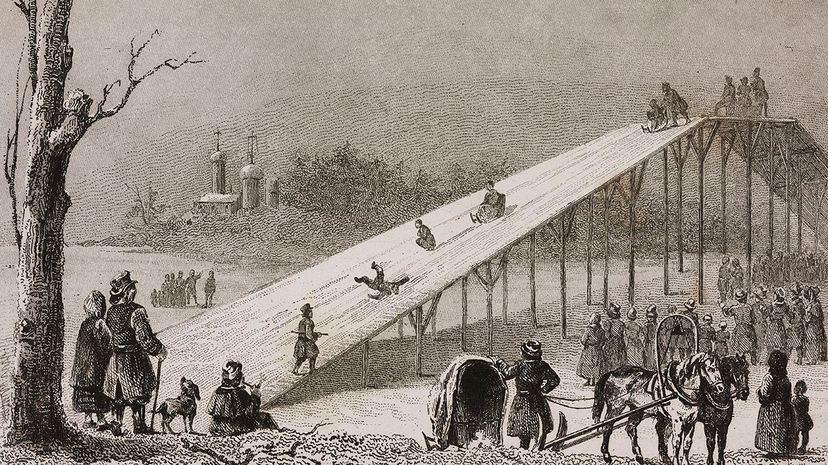Roller Coaster History

Roller coasters have a long, fascinating history. Roller coasters are the direct ancestors of monumental ice slides — long, steep wooden slides covered in ice, some as high as 70 feet (21 meters) — that were popular in Russia in the 16th and 17th centuries. Riders shot down the slope on sleds made of wood or blocks of ice, crash-landing in a sand pile [source: Levine].
Coaster historians diverge on the exact evolution of these ice slides into actual rolling carts. The most widespread account is that a few entrepreneurial Frenchmen imported the ice slide idea to France. The warmer climate of France tended to melt the ice, so the French started building waxed slides instead, eventually adding wheels to the sleds. In 1817, the Russes a Belleville (Russian Mountains of Belleville) became the first roller coaster where the train was attached to the track (in this case, the train axle fit into a carved groove). The French continued to expand on this idea, coming up with more complex track layouts, with multiple cars and all sorts of twists and turns.
Advertisement
The first American roller coaster was the Mauch Chunk Switchback Railway, built in the mountains of Pennsylvania in the mid-1800s. The track, originally built to send coal to a railway, was reconfigured as a "scenic tour." For a nickel, tourists got a leisurely ride up to the top of the mountain followed by a wild, bumpy ride back down [source: Levine].
Over the next 30 years, these scenic rides continued to thrive and were joined by wooden roller coasters similar to the ones we know today. These coasters were the main attraction at popular amusement parks throughout the United States, such as Kennywood Park in Pennsylvania and Coney Island in New York. By the 1920s, roller coasters were in full swing, with some 2,000 rides in operation around the country.
With the Great Depression and World War II, roller-coaster production declined, but a second roller-coaster boom in the 1970s and early 1980s revitalized the amusement-park industry. This era introduced a slew of innovative tubular steel coasters. Some of the most popular ride variations — such as the curving corkscrew track — saw their heyday during this time.
In the next section, we'll look at the coaster components that get the train rolling and bring it to a stop.